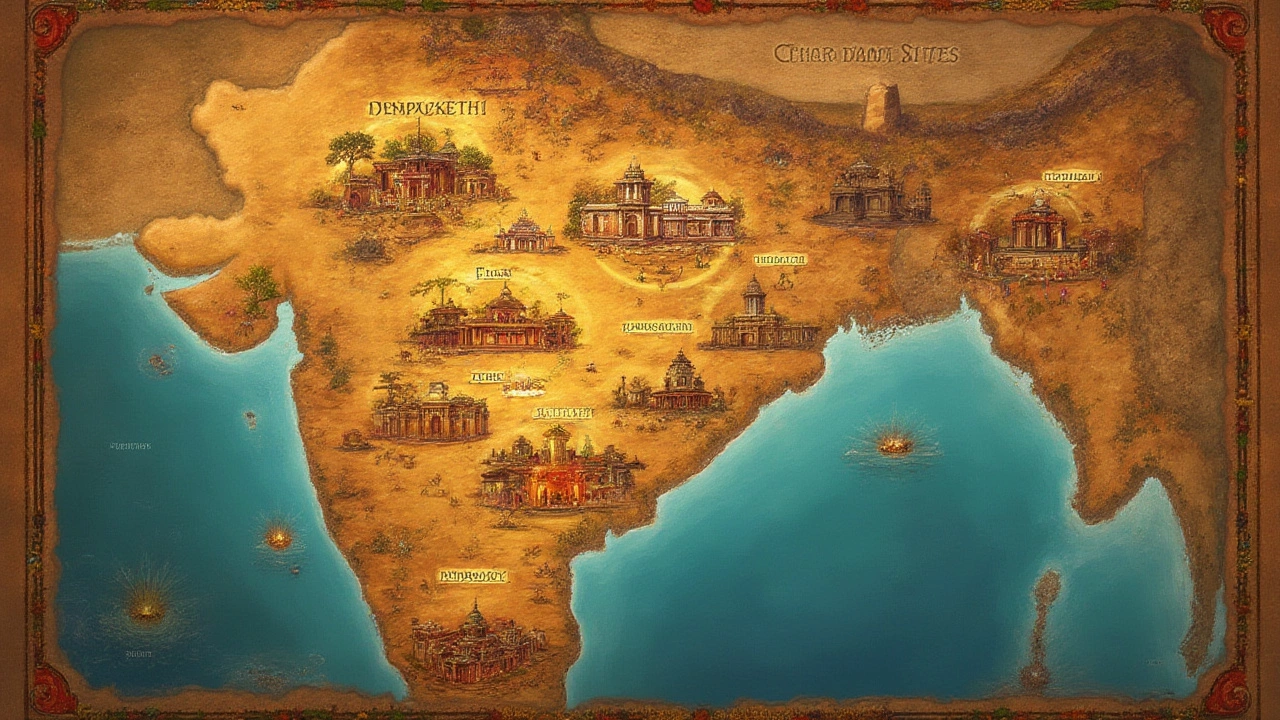
Ever wondered why Kedarnath isn't included in the famous Char Dham? Here's the real story explaining the difference between Char Dham and Chota Char Dham in India.
When exploring Hindu pilgrimage, a journey to sacred sites rooted in Indian spirituality. Also known as Tirtha yatra, it connects devotees with divine energy across the subcontinent. Hindu pilgrimage often starts with a visit to a Temple, a consecrated space where worship, prayer and rituals happen, then expands to regional circuits such as the Char Dham, the four premier Himalayan pilgrimage centers – Badrinath, Kedarnath, Gangotri and Yamunotri. Many pilgrims also seek the Jyotirlinga, one of twelve sacred Shiva shrines that embody divine light, while cities like Varanasi, the ancient ghats and temples on the Ganges, serve as spiritual hubs for meditation and rites. This blend of sites, stories, and rituals makes the pilgrimage experience uniquely Indian.
Understanding the why and how behind each destination helps you plan a smoother journey. The Char Dham circuit, for example, requires altitude acclimatization, reliable transport, and seasonal timing – the best window is from May to early October when mountain passes are open. In contrast, a Jyotirlinga tour spans the length of India, from Somnath in Gujarat to Rameshwaram in Tamil Nadu, demanding long‑distance travel but offering diverse cultural flavors along the way. Varanasi, perched on the Ganges, invites early‑morning sunrise boat rides and evening Aarti ceremonies that tap into the city’s timeless rhythm. Temples, whether the towering Brihadeeswarar in Tamil Nadu or the modest hill shrines of Himachal Pradesh, each dictate specific dress codes, offering days of fasting, or times for special poojas; respecting these norms deepens the spiritual impact.
Start with a clear itinerary that matches your fitness level and spiritual goals. If you aim to cover all twelve Jyotirlingas, break the trip into regional clusters – West (Somnath, Nageshwar, Mahakaleshwar), North (Kashi, Kedarnath), South (Rameshwaram, Grishneshwar) – and allocate extra days for travel buffers. For Char Dham, arrange a reliable local guide who knows the latest road conditions, especially after monsoon landslides. Pack light, bring breathable clothing, a reusable water bottle, and a small offering (like sandalwood paste or incense) that you can use at any temple. Health-wise, stay hydrated, carry basic first‑aid, and check if any vaccinations are recommended for remote mountain areas.
Mindful preparation also means researching each site’s festival calendar. Visiting Kashi during Maha Shivratri or joining the Kumbh Mela in Prayagraj adds a layer of communal devotion that’s hard to replicate elsewhere. Similarly, attending the annual Rath Yatra at Puri aligns your pilgrimage with centuries‑old tradition. When you arrive, engage with locals – priests often share legends that illuminate the hidden meanings behind rituals, while fellow travelers may suggest alternate routes or hidden shrines off the beaten path.
Below you’ll find a curated collection of articles that dive deeper into specific pilgrimage experiences, safety advice, budget planning, and cultural insights. Whether you’re a first‑time pilgrim seeking a quick Varanasi itinerary or a seasoned traveler mapping an exhaustive Jyotirlinga circuit, the posts ahead provide the details you need to make your journey meaningful and hassle‑free.

Ever wondered why Kedarnath isn't included in the famous Char Dham? Here's the real story explaining the difference between Char Dham and Chota Char Dham in India.